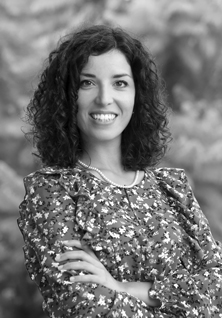Castelporziano Lectures
L’inanellamento degli uccelli è il modello migliore di citizen science?
Alessandro Montemaggiori, Francesca Buoninconti
In 150 anni di storia, l’inanellamento a scopo scientifico ci ha consentito di scoprire destinazioni, rotte, tempistiche e percorsi degli uccelli migratori. Sin da quando Hans Christian Mortensen ha applicato il primo anello alla zampa di uno storno, l’inanellamento si è appoggiato al lavoro fondamentale di migliaia di cittadini volontari, che aiutano ancora oggi i ricercatori a svolgere al meglio il loro lavoro. Oltre al valore scientifico, questa attività ha però anche un valore educativo potentissimo: è riuscito ad esempio a trasformare Ventotene da un’isola di cacciatori in un’isola dove si tutela e si studia la migrazione. E schiere di cittadini e bambini, dopo aver restituito la libertà a un piccolo passeriforme inanellato, si sono avvicinati alla tutela della natura e al birdwatching, oppure alla scienza. Quali lezioni ha da offrire l’inanellamento degli uccelli per progettare iniziative di citizen science che funzionino davvero?
Is the bird ringing the best “citizen science” model?
In one hundred and fifty) years of history, the bird ringing for scientific purposes has given us the possibility to discover destinations, routes, timing, and paths of migratory birds. Since Hans Christian Mortensen applied the first band to the leg of a starling, bird ringing has relied on the key work of thousands of volunteer citizens, who still help researchers to do their work. Besides its scientific value, this activity has a powerful educational significance: it has managed, for example, to transform Ventotene from an island of hunters to an island where migration is protected and studied. And a multitude of citizens and children, after restoring the freedom to a small ringed passerine bird, got closer to nature conservation and birdwatching, or even to science. What lessons does bird ringing have to offer to design “citizen science” initiatives that truly work? Can we save the forest with “assisted ecological succession”?

Alessandro Montemaggiori
Ricercatore associato presso il Dipartimento di Biologia e Biotecnologie “C. Darwin” dell’Università di Roma “La Sapienza”, ha lavorato e lavora su conservazione e gestione della fauna per diversi organismi e istituzioni internazionali e nazionali tra cui l’IUCN, l’ISPRA, l’EU, il WWF, la Commissione CITES, il Ministero dell’Ambiente, l’ICAO e l’ENAC. È stato direttore della Riserva Naturale Statale e Area Marina Protetta “Isole di Ventotene e S. Stefano” e responsabile scientifico del Bioparco di Roma.
Associate researcher at the Department of Biology and Biotechnology “Charles Darwin” of the University of Rome “La Sapienza”, He has worked and is currently working on wildlife conservation and management for various international and national organizations and institutions including the IUCN, ISPRA, the EU, WWF, “la Commissione CITES”, the Ministry of the Environment, ICAO and ENAC. He directed the State Nature Reserve and Marine Protected Area “Islands of Ventotene and S. Stefano” and was the scientific director of the Biopark of Rome.

Francesca Buoninconti
Naturalista e giornalista scientifica. Oggi è in redazione e al microfono di Radio3 Scienza, il quotidiano scientifico di Radio3 Rai. Lavora per La Banda dei FuoriClasse, programma realizzato in collaborazione con il Ministero dell’Istruzione, in onda su Rai Gulp. Scrive di scienza, natura e clima per varie testate, tra cui Il Bo Live e Il Tascabile. Per Codice Edizioni è autrice di Senza confini. Le straordinarie storie degli animali migratori, tradotto in quattro lingue.
Naturalist and scientific journalist. Currently, she is on the editorial staff and at the microphone of Radio3 Scienza, the scientific news of Radio3 Rai. She works for La Banda dei FuoriClasse, a program produced in collaboration with the Ministry of Education, broadcasted on Rai Gulp. She writes about science, nature, and climate for several newspapers, including, “Il Bo Live” and “Il Tascabile”. For “Codice Edizione” she is the author of “Senza Confini” and The Extraordinary Stories of Migratory Animals, translated into four languages.
